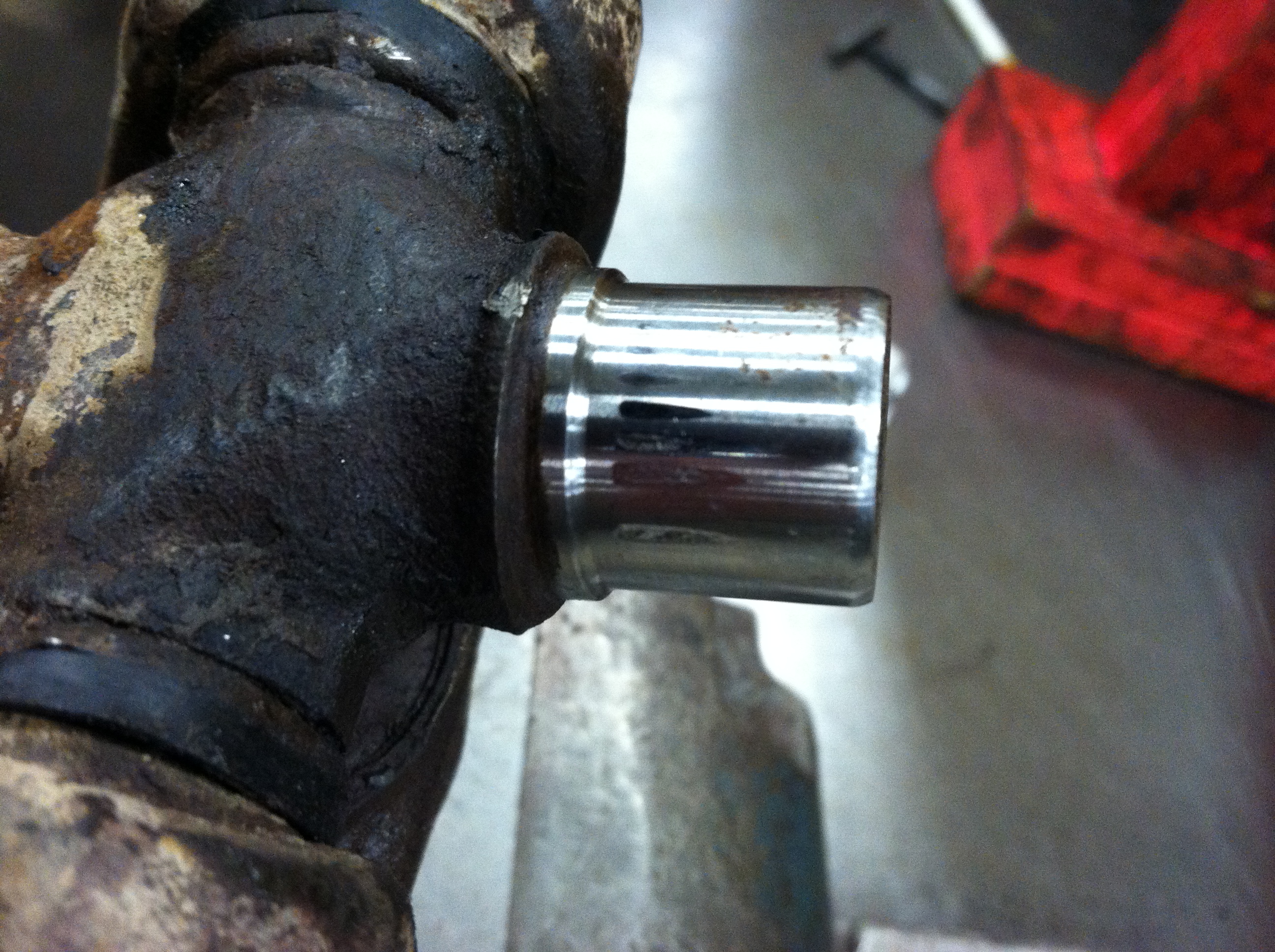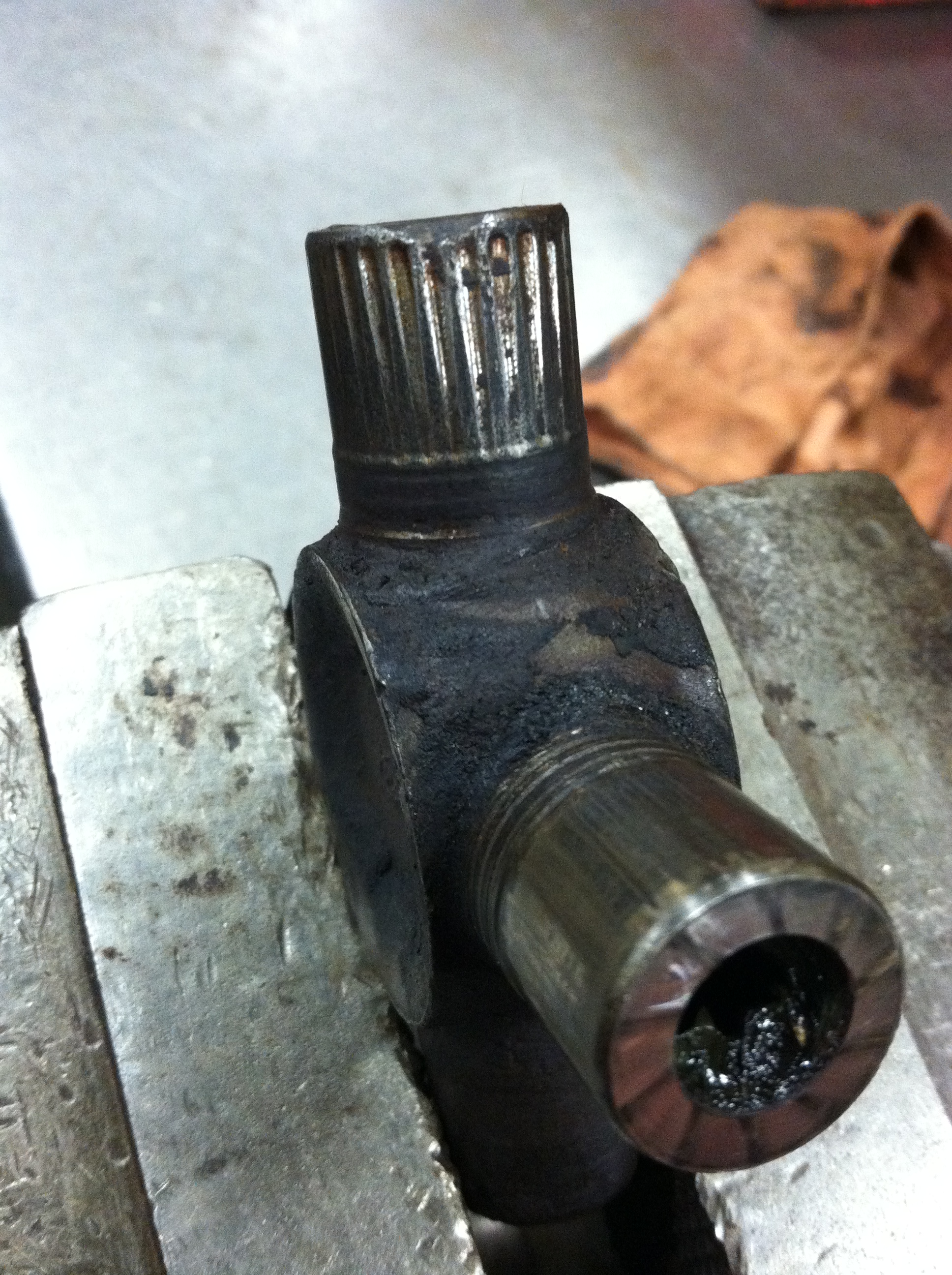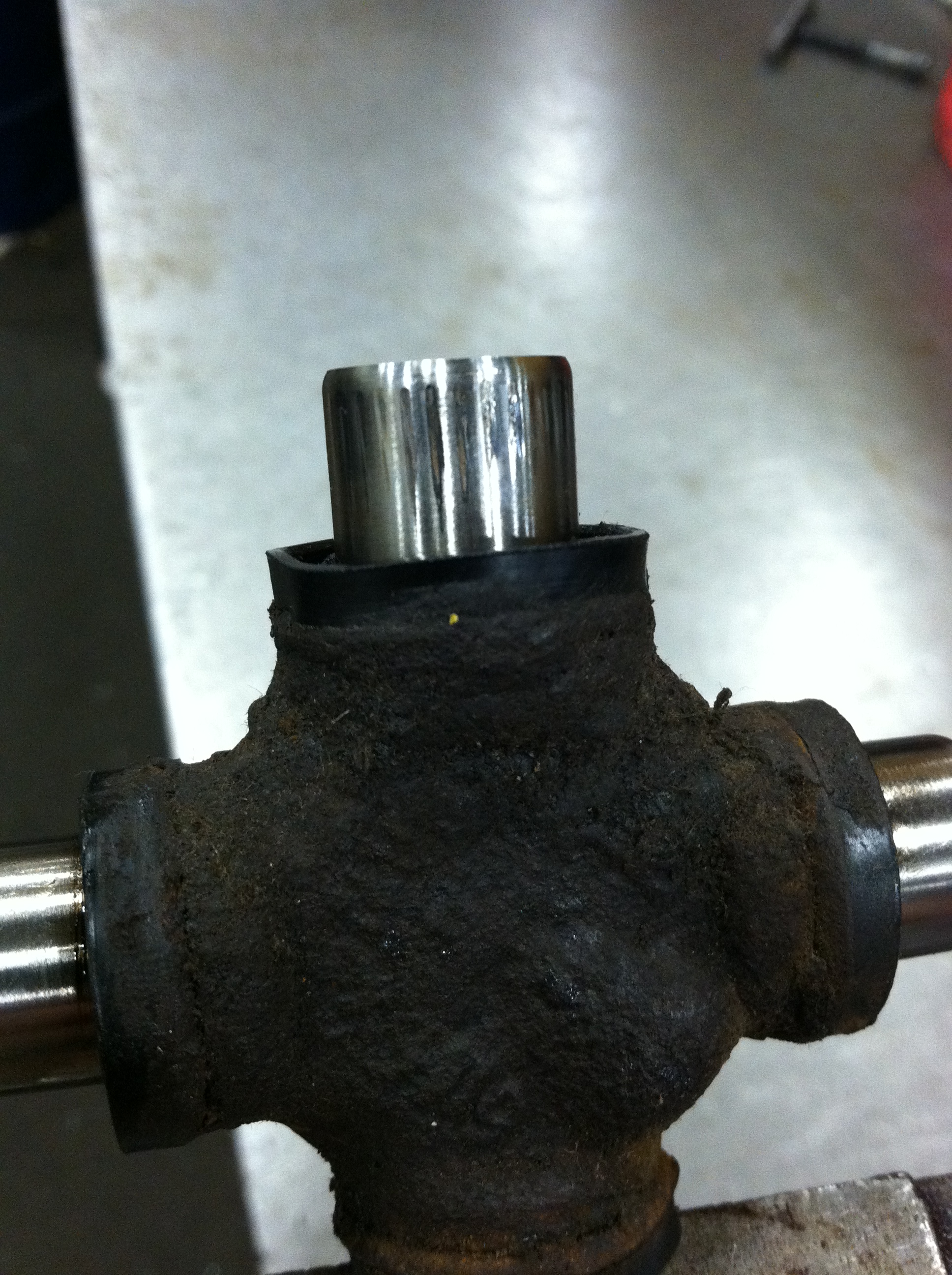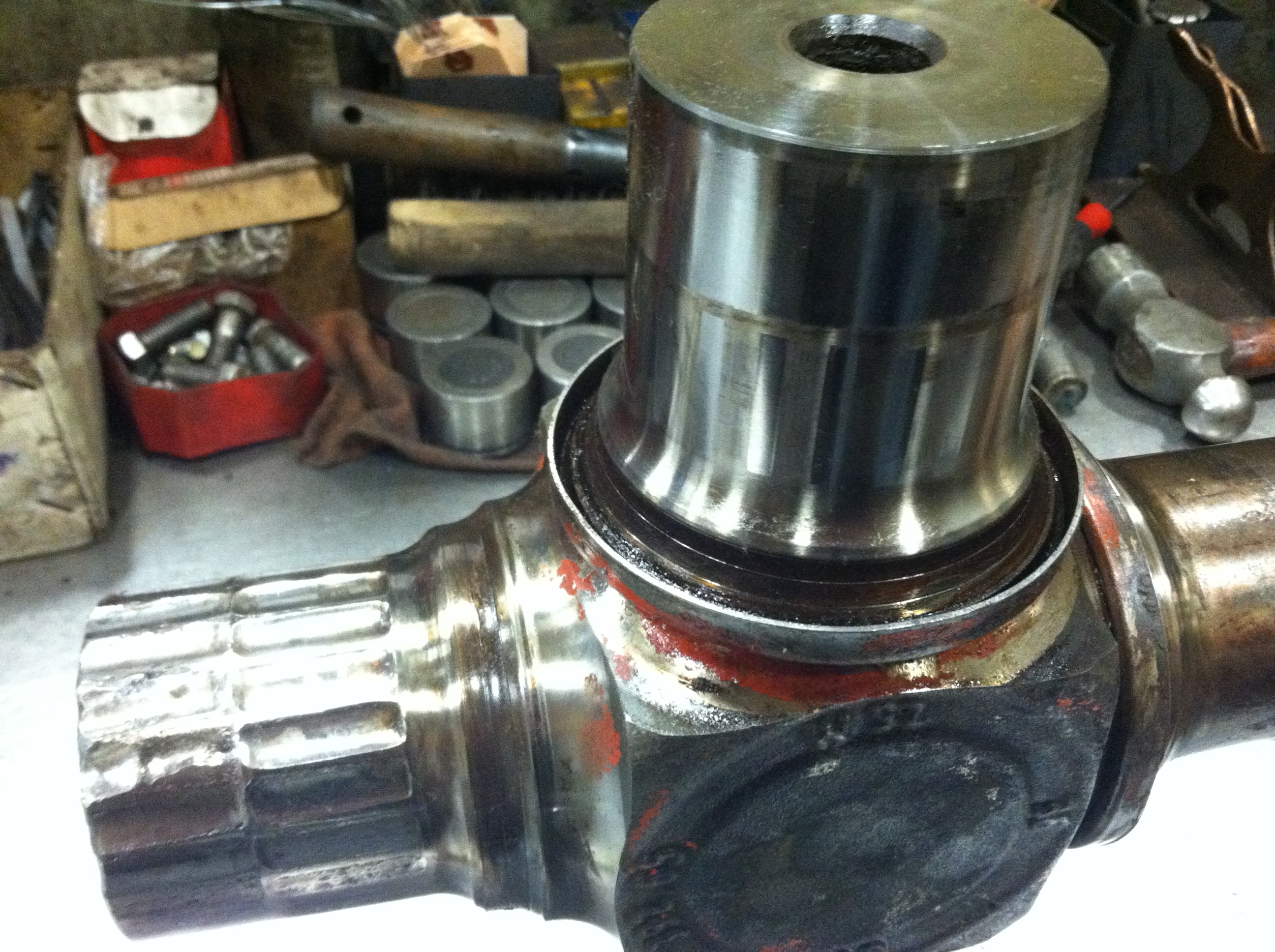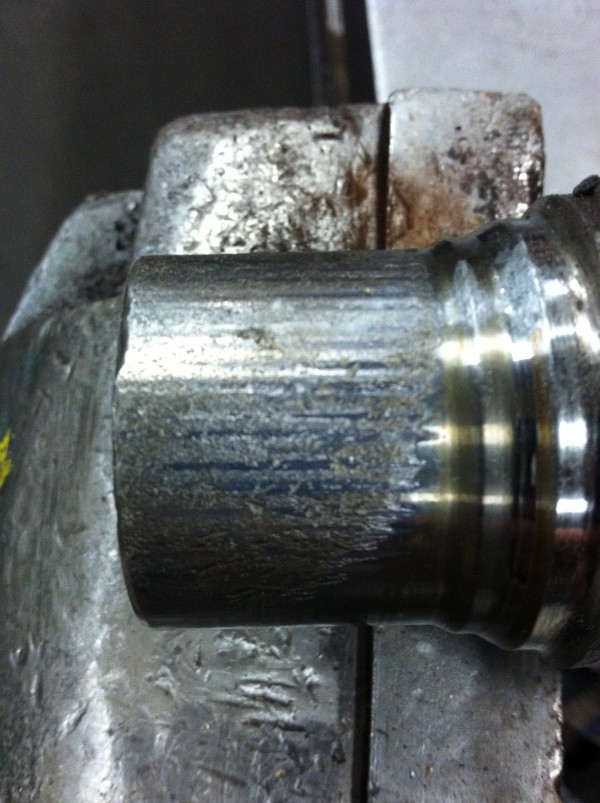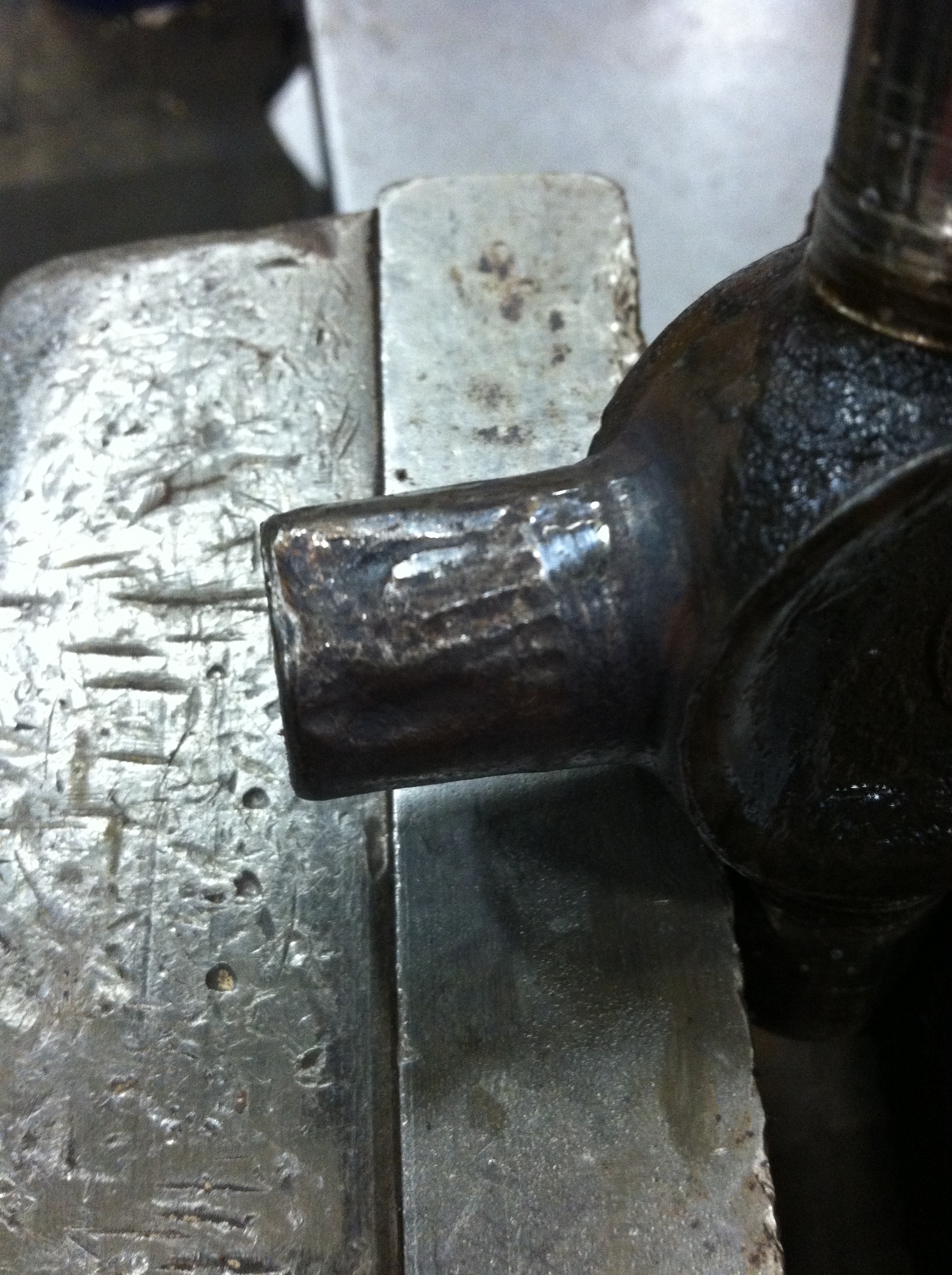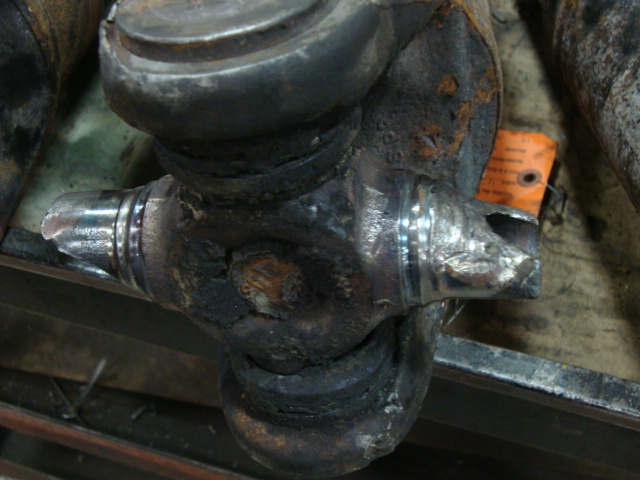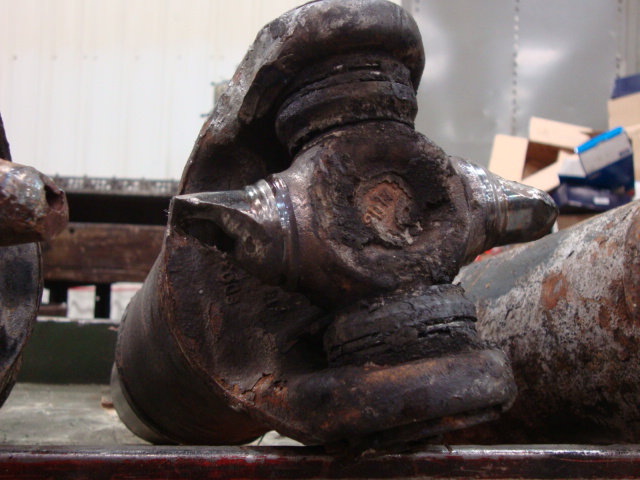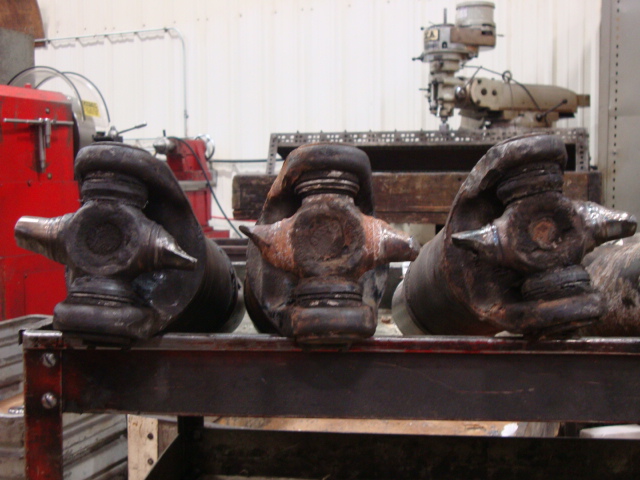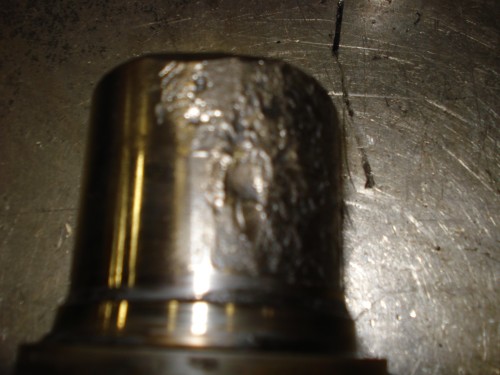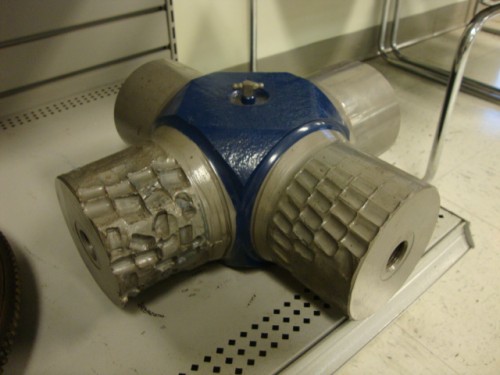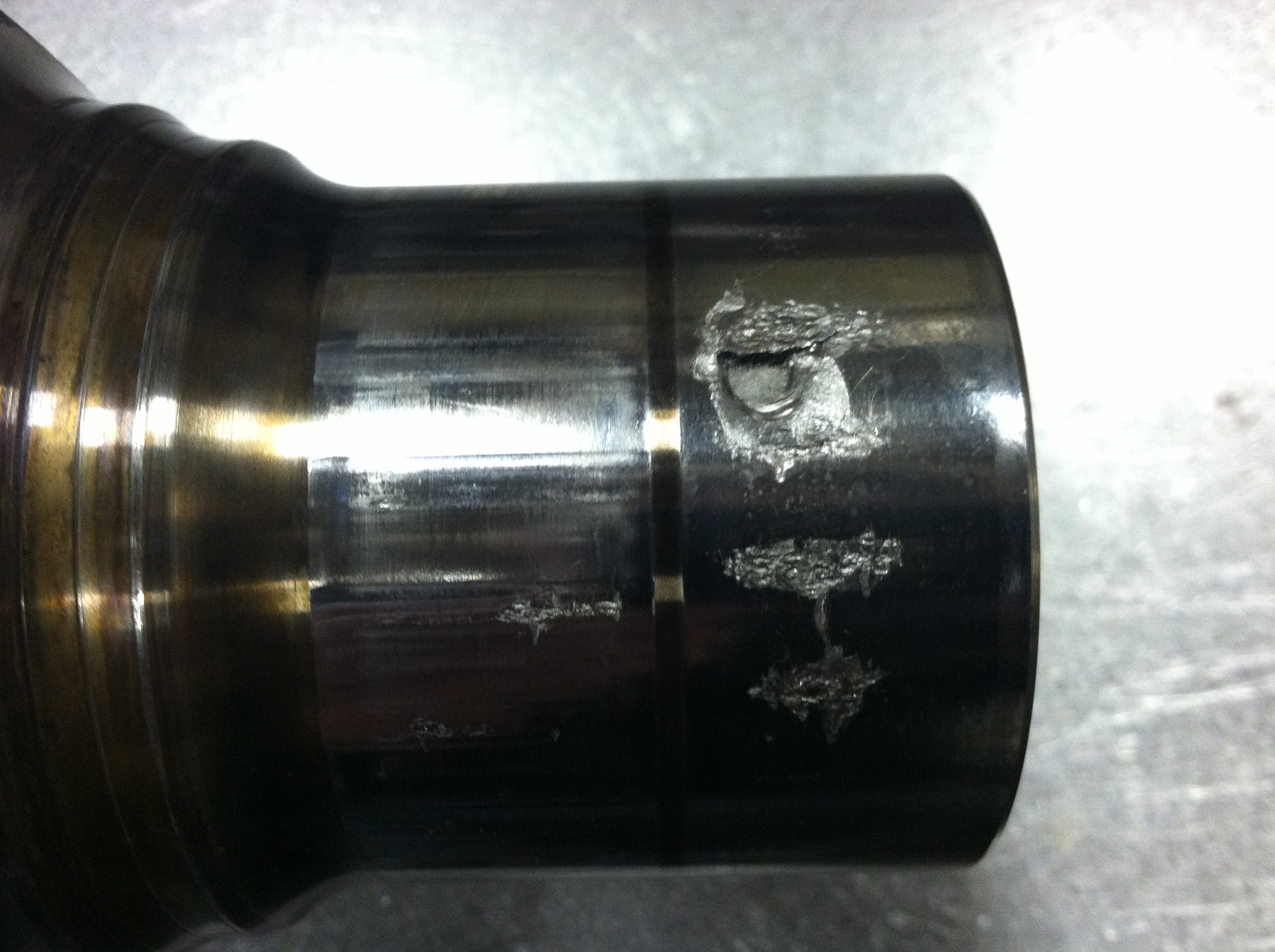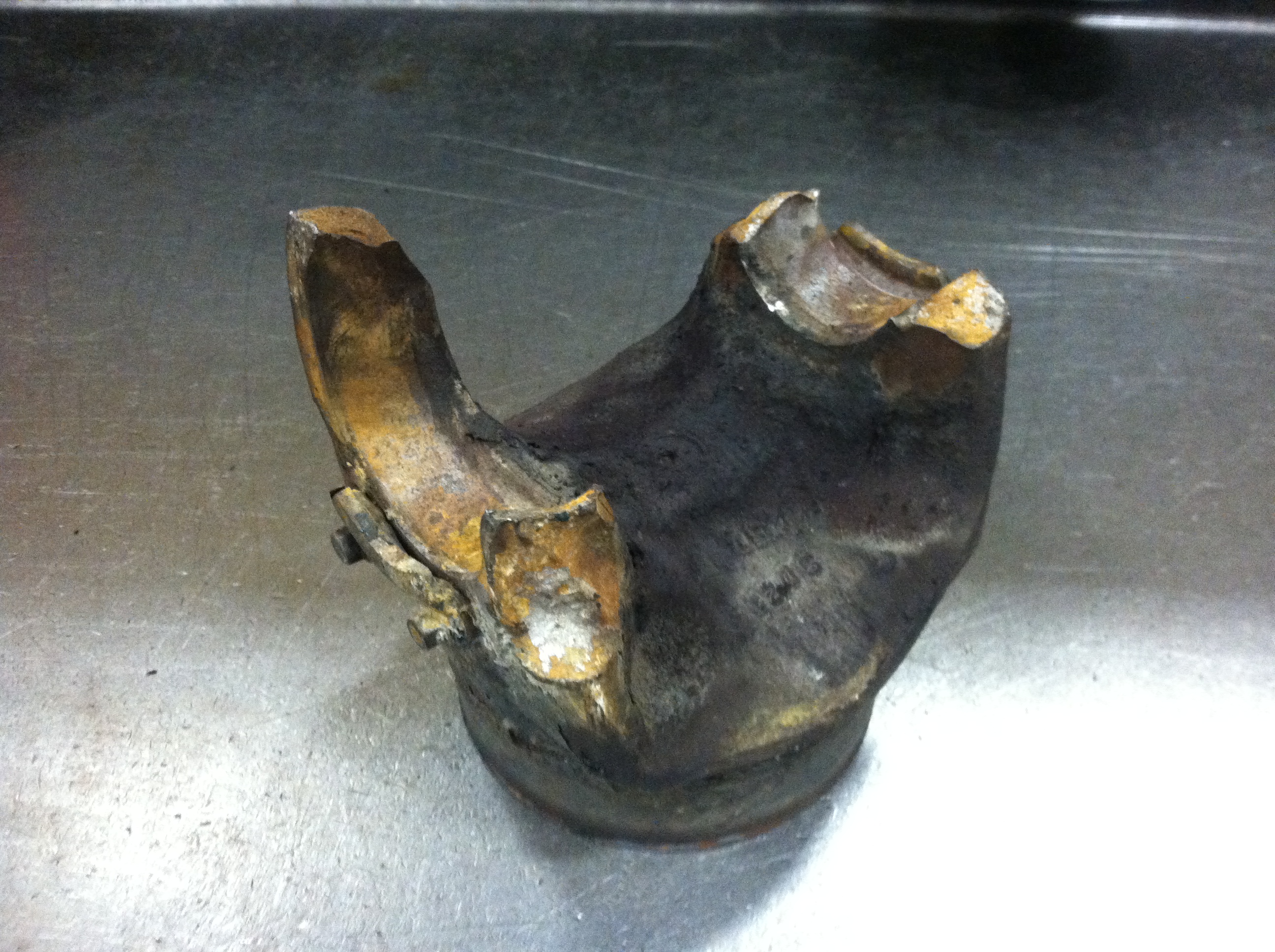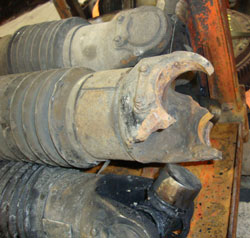Typical Universal Joint Kit Failures
Brinelling
Brinelling is when needle marks appear on the surface of the U-joint cross, which is usually caused by excessive torque, driveline angle. It can also be caused by a seized slip yoke or by a sprung or bent yoke
If you have changed engines or transmissions, calculate the torque transmitted by the new combination.
Your drive shaft series may be too small.
- Can be caused by operating angles which are too large.
- Can be caused by a bent or sprung yoke.
- Overloading a drive shaft can cause yoke ears to bend. Bearings will not roll in the bearing cap if the yoke ears are not aligned. If the bearings stop rolling, they remain stationary and will “beat themselves” into the surface of the cross.
A “frozen” slip assembly will not allow the drive shaft to lengthen or shorten. Every time the drive shaft tries to shorten, the load will be transmitted into the bearings and they will mark the cross trunnion. Unlike brinnell marks caused by torque, brinnell marks that are caused by a frozen slip are always evident on the front and back surfaces of the cross trunnion. - Improper torque on U-bolt nuts can cause brinelling.
Most manufacturers publish the recommended torque for a U-bolt nut.
Spalling
Spalling looks like the bearing surface of the U-joint has been “scraped” away.
Spalling is usually caused by water or dirt contamination
- Check the U-joint kit seals for damage and replace as necessary.
- Check to make sure the service technician is using the proper lube type.
Burned U-joint cross Trunnions
Improper lube procedures, where recommended purging is not accomplished, can cause one or more bearings to be starved for grease.
Always make sure new, fresh grease is evident at all four U-joint seals.
- Using the wrong lube can result in burned trunnions.
- Unless otherwise recommended, use a high quality E.P. (extreme pressure) grease to service most vehicular, industrial and auxiliary drive shaft applications.
End Galling/Galling
The end of the trunnion (of the U-joint cross) looks like material has been “gouged” out.
Usual cause: Operating angles are too large.
U-joint Fractures
U-Joint fractures are usually caused by a shock load, but can also be caused by an improper application.
Calculate the torque transmitted by the engine/trans combination. Check to make sure the drive shaft series is not too small for the application.
-
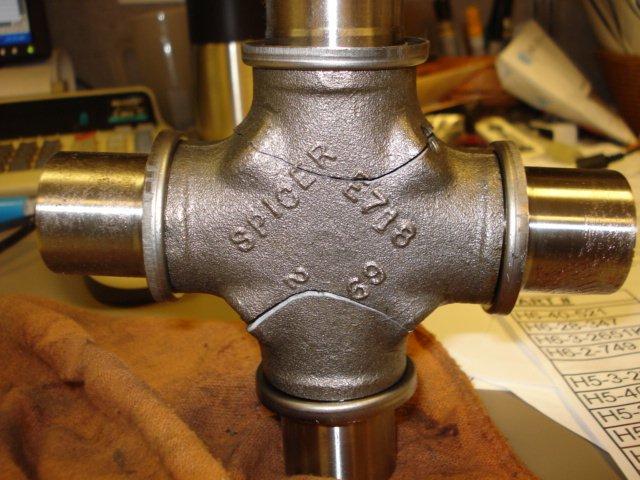
Universal Joint High Torque Fracture(s)
-
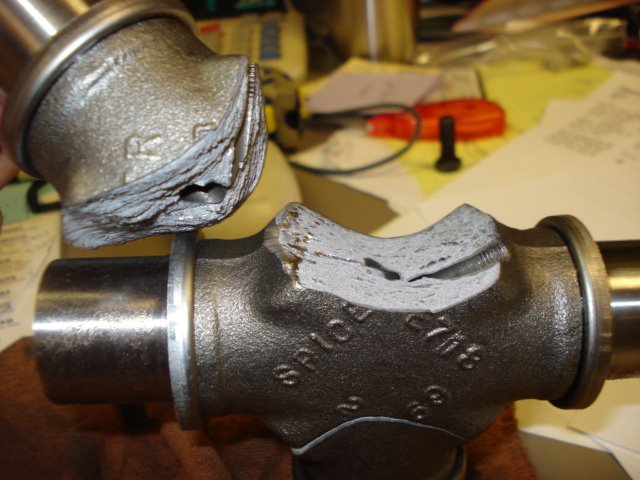
Universal Joint High Torque Facture
-
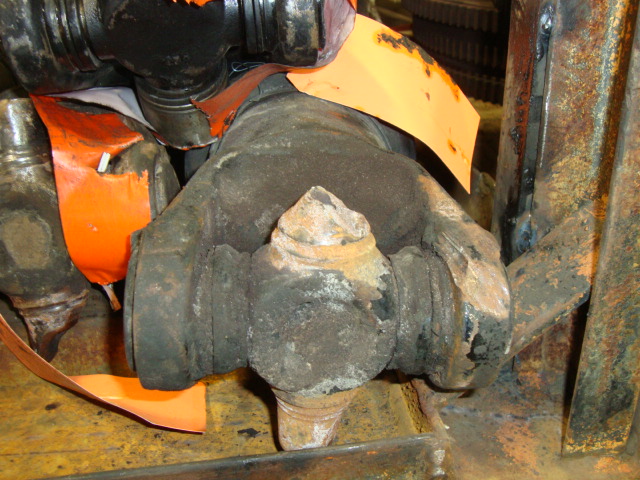
Universal Joint Fracture
-
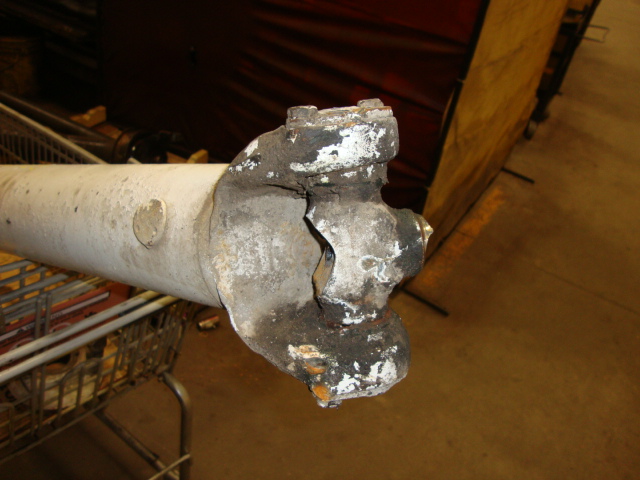
Universal Joint Fracture
Improper assembly procedures
Striking the bearing plate with a hammer can cock it on the bearing and may cause the bearing to be pulled down crooked in the yoke. Cocking the bearing in the bore of the yoke may put undue loads on the cross, its bearings and the seals inside those bearings, which may cause premature failures and make proper lubrication difficult.
Bent or deflected end fitting
Bent yokes will put abnormal loading on the U-joint bearings and lead to premature failure. A yoke can be bent by a shock load or by over torquing the yoke.
Mixing incompatible greases
All greases are a mixture of different additives and thickeners. Mixing greases from different manufacturers can lead to a mixture with a lower service performance than either of the original grease products.
Thorough purging of all four bearing seals on each universal joint can help alleviate the possibility of mixing incompatible greases.
U-joint cross, broken at a bearing surface
U-joints seldom break off at the bearing surface. It takes a very large shock load to cause this type of failure. It is also very difficult to inspect for this type of failure because they, many times, start as a small crack and progress into a complete failure some time further “down the road”.
Operating angles that are too large
Large U-joint operating angles can be caused by improper drive shaft installations, (Vehicle owners sometimes make changes to the original vehicle that can mess up operating angles) a sagging suspension or even improperly adjusted air bags.
Keeping angles small and within recommendations will help to reduce wear on U-joint components and help to lower the chances of having inertia and secondary couple vibration problems.
Operating angles are NOT cancelled
Proper cancellation reduces the chance of having torsional vibrations.

